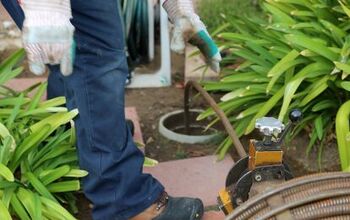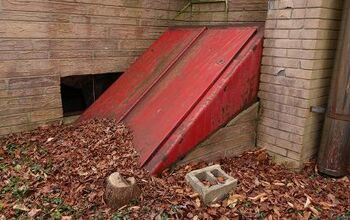How Much Do Oxy-Acetylene Tanks Cost? (Find Out Now!)

A controlled flame can be a valuable tool. With the proper level of control, welding can be performed to implement various metals into any project. But it is important to find responsible, safe sources to implement that controlled flame.
A resourceful tool is an oxy-acetylene tank. Understanding the costs of filling the tank is important, too. Generally speaking, you can expect to pay in the $200-$300 range. The cost will depend on the size of the torches, the size of tanks, and the level of fill that you plan to have.
Do You Need to Hire a Professional Welder?
Get free, zero-commitment quotes from pro contractors near you.

How Much Does It Cost to Fill an Oxy-Acetylene Tank?
There are single fill costs as well as what you can expect to pay on a yearly basis. On average, the cost will be between $200 and $300. This, of course, depends on the level of fill, the size of the tank, and the brand/size of the torches.
Private cylinders. Make sure that you choose private cylinders (mean that they have no company markings). When it comes time to have them filled, the company should just swap the tanks out entirely.
You can then factor out the yearly costs based on how many times you think that you will need to refill the tank. There isn’t any solid way to project yearly costs as it all depends on how much you use your oxy-acetylene tank.
Who Fills the Tanks and What Do the Tanks Cost?
There are various specialty shops in a given town that should be able to fill up your oxy-acetylene tanks when you need them. Still, there are large stores like Tractor Supply Co. that can do the same. You can even purchase welding gas cylinders or even exchange your empty cylinder for a new, full one.
What about just buying the tanks on their own? How much can you expect to pay for the tanks on their own? Generally speaking, you can find them for anywhere between $100 and $120 depending on the supplier.
Lifespan. While there are factors in play like the amount of use and type of tank, you can expect to get at least 10 years out of a steel tank.
What Size Oxy Acetylene Tanks Should I Get?
If you are new to the world of welding and don’t know where to start, it can seem like a confusing choice to make. The new standard is 1/10 of capacity for optimal safety. Ideally, it is best to keep the 80 as backup or traveler.
You can also look into at least 125 of o2 and even go up to 250 as gas since they are way cheaper when in the bigger tanks. Then, all you need is 145 acetylene and you should be good to go for most cutting or welding situations.
What Should I Do When Storing Compressed Gas Cylinders?
There are proper safety measures to take when storing your compressed gas cylinders. Remember, these are potentially dangerous and explosive gases that you are using. One wrong move could be catastrophic.
That said, there are a number of measures that should be taken during the storage process. Doing so will ensure optimal safety.
Steps to Take to Safely Store Compressed Gas Cylinders
- Check local guidelines. Start out by looking into the local fire codes. This will provide you with a base guideline for storing flammable gas cylinders safely.
- Proper storage area. Make sure that you store any cylinders in a place that is well-ventilated, dry, and clearly labeled. Make sure that there is no direct exposure to the sun or heat, and keep them away from aisles, doorways, stairs, and elevators.
- No smoking. If you are planning on storing the gas cylinders in an area with a lot of traffic, make sure that you have “no smoking” signs posted in the area. If it is a home workshop, you probably don’t need this kind of signage.
- Upright. Any cylinders that you have, either full or empty, should be stored in the upright position. Not only that, make sure that they have been secured using a non-conductive belt or insulated chain.
- Protective caps. When you are storing these tanks, make sure that they all have their cylinder valves closed. Used a protective cap to provide an extra measure of safety during storage.
- Outside storage. Should you decide to keep your tanks outdoors, make sure that they have the proper storage. The enclosure should be both tamper-proof and fireproof to protect against fire or explosion.
- Optimal conditions. It is important to protect against extreme heat or sunlight exposure. But you will want to protect against ice, snow, salt, water, corrosion, and extreme high or low temperatures as well.
- Protect from falling. With the tanks being stored in an upright position, you want to keep them from falling, too. Use a chain or some other type of support system. Keep them secured individually so as to reduce falling when removing them from storage.
What to Do with Empty or Out of Service Tanks
Sooner or later, your oxy-acetylene tank will be empty or it will be out of service entirely. When that time comes, you will need to take the proper steps to remove and dispose of them. Even empty, they can be potentially hazardous and need to be treated with care.
- Label them. Make sure that you either label or mark them as empty and store them away from any full tanks that you may have. Return them to the supplier at your earliest convenience.
- Remove regulators. When not in use, remove the regulators and keep them stored away from any oil or grease. Whenever in storage, put protective caps on those fittings. You want to keep the fittings and cylinders from getting contaminated by dust, grease, and oil.
- Don’t use unlabeled. If you have a tank that isn’t properly labeled or the label has worn and isn’t legible, don’t use it. Unfortunately, there are no standardized colors for industrial gas tanks so just assuming that a certain color goes with a certain gas can be dangerous.
How Do I Move the Tanks?
Sooner or later, you are going to need to move these tanks, whether they are full or empty. There are a few things to do (and not do) in order to properly and safely move them when the time comes.
Things to do:
- Use a trolly or dolly, securing the tanks in the upright position.
- Close all the valves on the tank, take the regulator off, and replace the protective cap for the valve, hand tightening it before moving.
- Any leaky tanks should be removed by the supplier as soon as possible.
- Use lifting cradles if you use something like a derrick, crane, or some other kind of lifting mechanism.
- When transporting by vehicle, make sure that the tanks are secure and in an upright position.
Things to not do:
- Never lift the tank by the valve cap or sling with chains or ropes.
- Never lift with electromagnets.
- Don’t slide, drag, or drop the tanks. If you need to move a short distance, they can be rolled on their base.
- Never let the tanks collide with one another.
- Never put them on their sides. If you accidentally leave it laying, set it upright and give it an hour or so before using it.
- Never, ever mix gases in a tank.
Do You Need to Hire a Professional Welder?
Get free, zero-commitment quotes from pro contractors near you.

Related Questions
How Long Will a 10-cu ft Acetylene Tank Last?
Knowing how long your acetylene tank will last can give you a better idea of when you will need to refill/replace your tank. There is something known as the acetylene withdrawal rule that can act as a basic guideline.If you have a 10-cu ft tank, divide it by 7 and you will end up with 1.42 cubic feet safe withdrawal per hour. Conversely, 3 CFH divided by 60 minutes in an hour comes out to 0.05 cubic feet per minute. Using this math, you should be able to get 28 minutes of safe use at 3 CFH and 14 minutes of safe use at 6 CFH.
What Pressure Should Oxygen and Acetylene Be Set at for Cutting?
When properly used, oxygen and acetylene can make for an effective cutting tool. The key is to know what pressure to set the two at in order to get optimal cutting conditions. Cutting tip pressures for oxygen and acetylene can vary depending on size.For single-hole brazing and welding. Generally speaking, the single-hole tips that you find will be stamped with either a single or a double-digit number. Set both the oxygen regulator pressure and the fuel-gas regulator pressure to the stamped number. A good example here is if you see a stamped “5”. That means 5 psig for oxygen pressure and 5 psig fuel gas pressure.For multi-hole cutting. Let’s say that you don’t have access to the manufacturer settings or information. If you are cutting less than a 1.5” thick steel, you would need to set the oxygen regulator at 40 psig, and the acetylene regulator for 10 psig.
Related Guide

Ryan Womeldorf has more than a decade of experience writing. He loves to blog about construction, plumbing, and other home topics. Ryan also loves hockey and a lifelong Buffalo sports fan.
More by Ryan Womeldorf



























